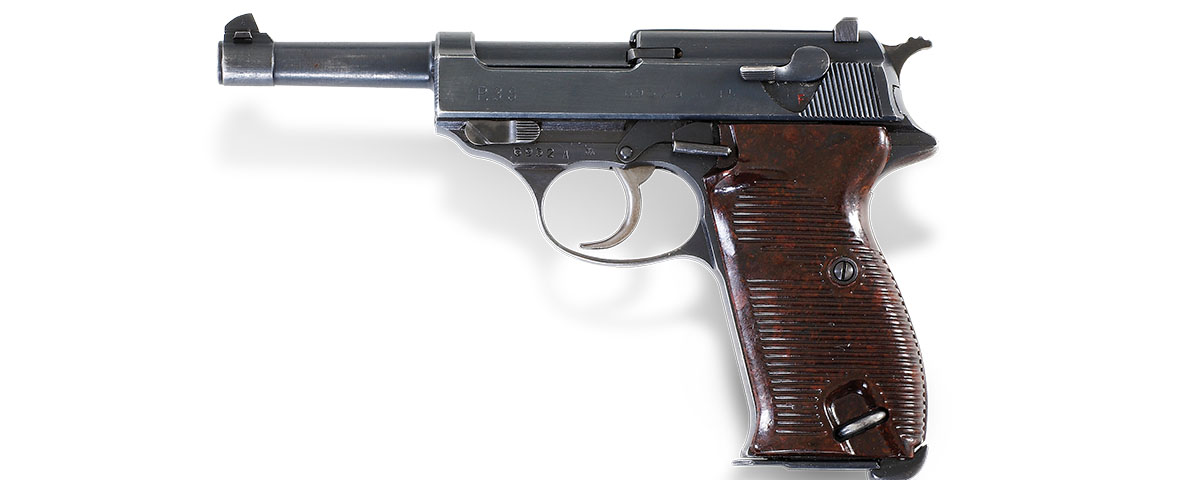The Walther P-38 arguably supplants even the infamous Luger P.08 as the definitive German pistol of the 20th century. Its development began in the early 1930s, when a cash-strapped German army looked to replace the elegant but expensive Luger. The Carl Walther firm responded with a larger version of its PP (Polizei Pistole), but the gun’s blowback system was deemed unsuitable for 9mm rounds. Walther worked through several design variants that ultimately led to the short-recoil HP (Heeres Pistole). It was this version that the German army adopted in 1938 and two years later put into mass production as the Walther P-38.
The P-38 broke new ground in the design of semiautomatic handguns. It was the first locked-breech pistol with a double-action trigger mechanism plus a hammer decocker. Together, these features meant that the pistol could be holstered safe but ready with a round in the chamber; to fire, the user had only to draw the pistol, flick off the safety, and pull the trigger. A loaded chamber indicator at the rear signaled that the weapon was “hot.” The P-38 was smooth shooting, accurate, and reliable—everything a soldier could want from a sidearm—and Walther produced some 1.2 million of them from 1940 to 1945.
The P-38 wasn’t again produced for the German military until after 1957. In the 1960s a modular, modified P-38 starred as a pistol carbine on The Man From U.N.C.L.E. television series. Often called the “godfather” of the modern combat handgun, the P-38 is revered today by collectors as much for the grace of its lines as for its history.
This article appeared in the Winter 2019 issue (Vol. 31, No. 2) of MHQ—The Quarterly Journal of Military History.





